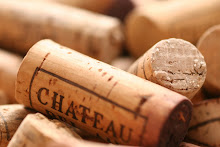
Top vintage Bordeaux futures are often recognized as having delivered handsome returns, and investors may be particularly tempted by the 2009 futures when they consider the other great vintages released into recessions: 1990 (futures offered during the recession of 1991), 1996 (futures offered during the currency crises of 1997), and 2000 (futures offered during the recession of 2001).
Buyers of 1990, 1996, and 2000 Bordeaux futures did very well (around 300-400% for the first growths), but their outsized returns were powered by the internet bubble of the late ‘90s and then credit bubble of the early 2000s. Other great Bordeaux vintages, such as the 2005 have not done as well, with the ’05 first growth futures collectively delivering 5% average annual returns to date. Should 2009 Bordeaux futures follow the historical precedent of the other recession offerings, such as the 2000? Or will it be more in line with the bubble prices of the 2005s?
Investing in 2009 Bordeaux futures is not without substantial downside risk; bubble money is still chasing these wines. See the full story of how the un-popped Asian real estate bubble is inflating Bordeaux prices here.
At $1000-$1500/bottle, the 2009 first growths cannot be justified, when there is mature wine selling for less. Wine investors would be better off buying OWCs of 1982 Mouton, or 1989 Haut Brion, which trade at similar levels to the ’09 futures. Today’s situation is very different from July 2001. At that time, 2000 first growth futures were offered at $250/bottle, while the 1982 first growths traded between $400 and $500. The 60% premium for the ‘82s made sense; older vintages should cost more. Today, they don’t. Wine investors should expect either a price drop in the 2009s, or a big price jump in the mature vintages.
I wouldn’t rule out both.




No comments:
Post a Comment